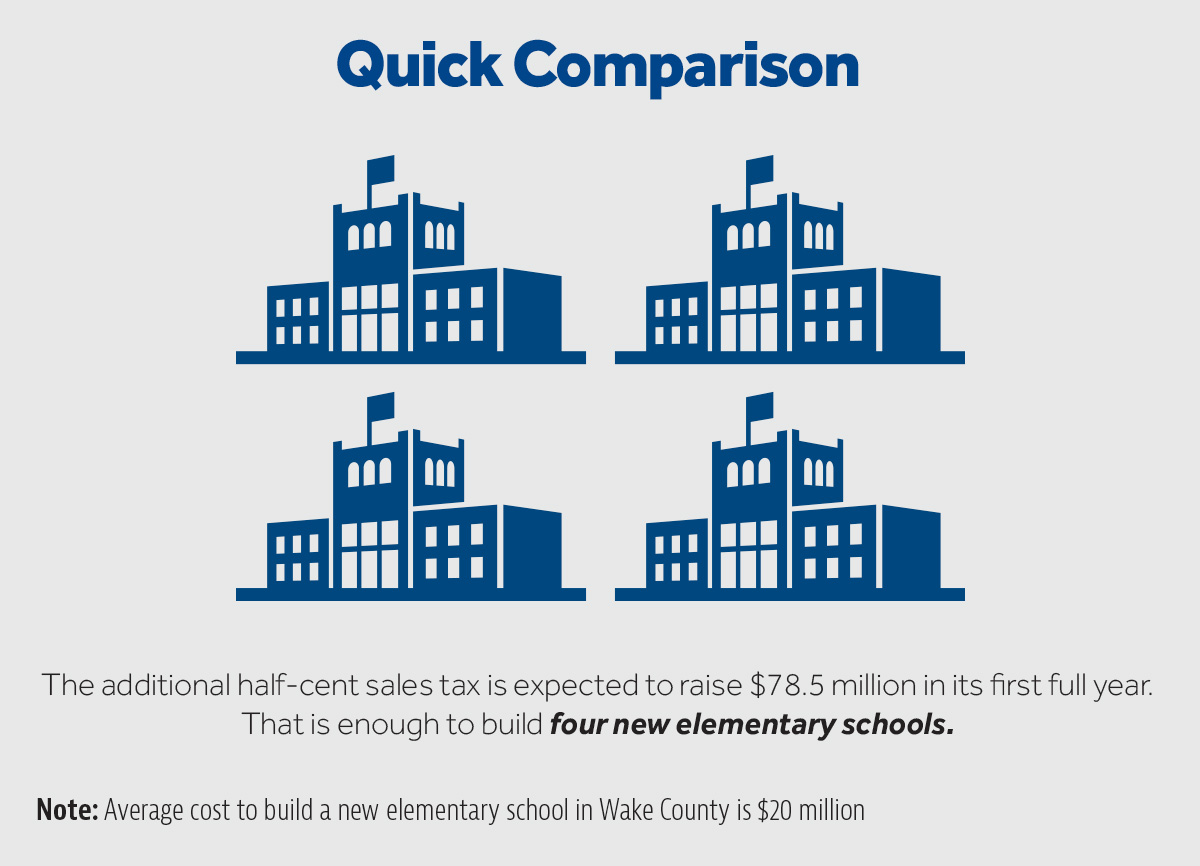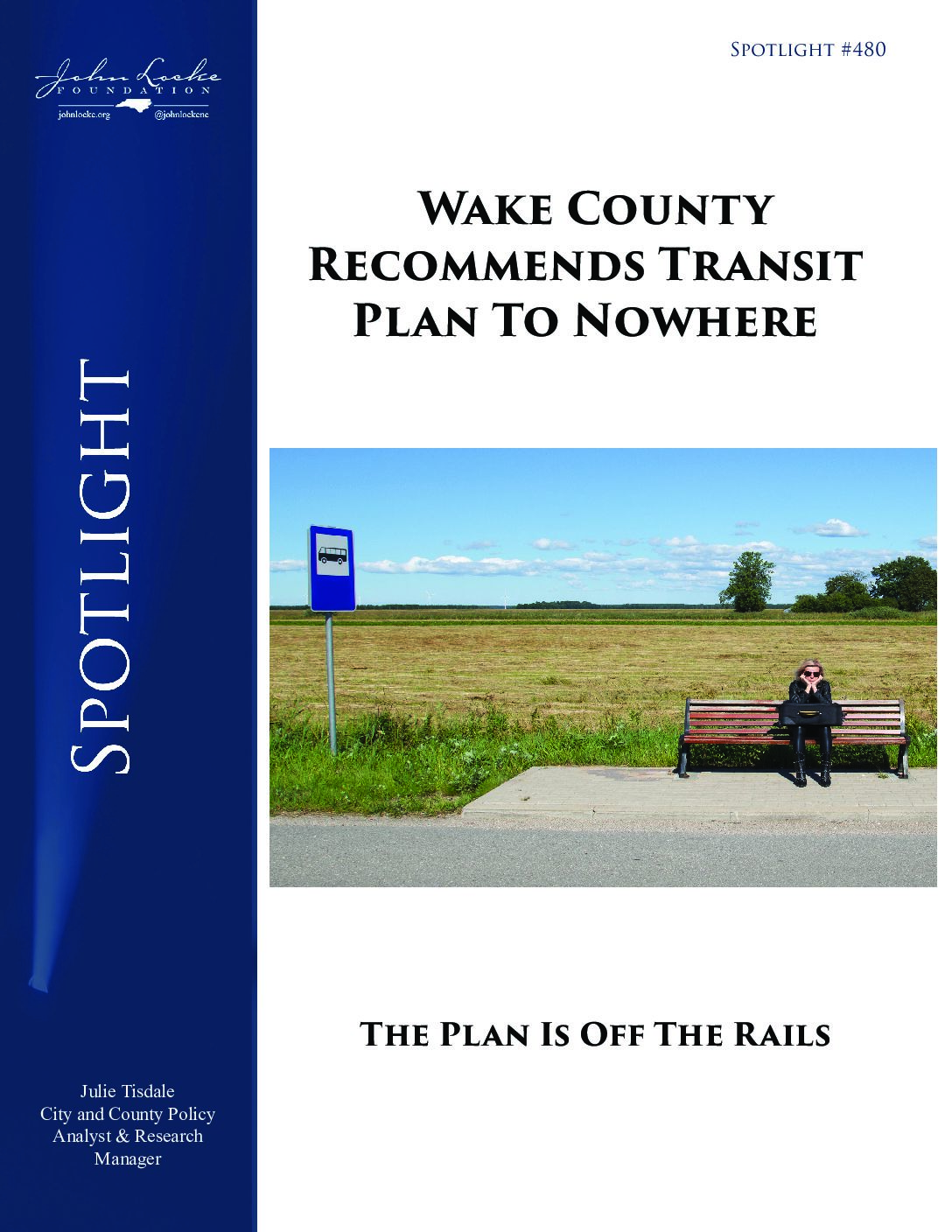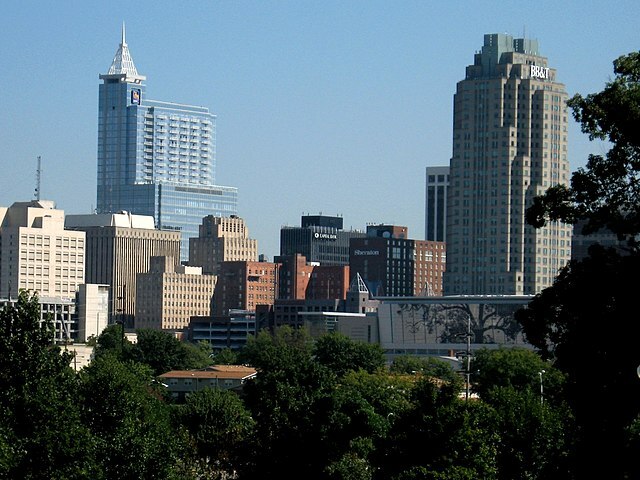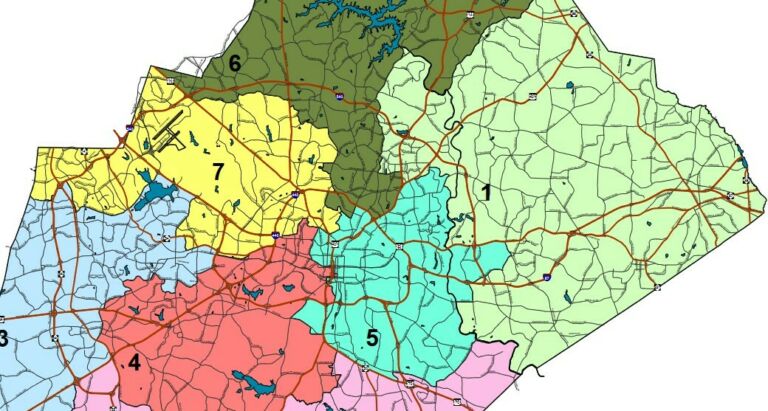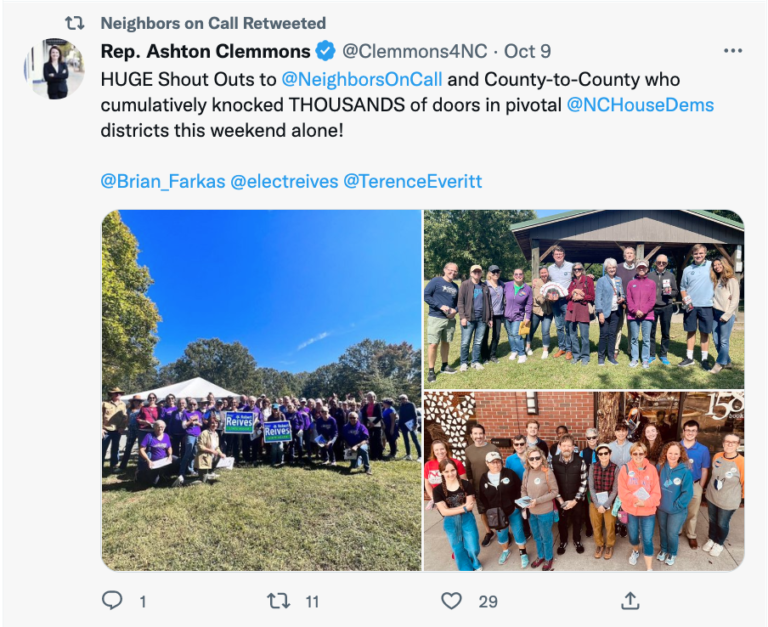On November 8, voters in Wake County will be presented with a ballot full of national, state, and local races. But they will also face a question that could cost them billions of dollars over the next decade. The last item on the ballot will be a referendum in which voters will be asked to vote “For” or “Against” the following question.
One-Half Percent Local Sales and Use Tax
One-half percent (1/2%) local sales and use taxes, in addition to the current local sales and use taxes, to be used only for public transportation systems.
There’s a lot riding on the answer that Wake County voters give.
The Wake County Transit Plan
The Wake County Transit Plan is enormous. It calls for spending $2.3 billion over 10 years1 to build commuter rail lines and bus rapid transit (BRT), increase the num- ber and frequency of regular bus lines, and connect every municipality in the county through transit. And that’s just the first 10 years. While the details aren’t yet worked out, the county definitely sees this as only the beginning. Of course, what this means is that, should the plan be implemented, taxpayers would likely be on the hook for far more than $2.3 billion and for far longer than 10 years.
But for now, what’s on the table is that initial 10-year plan.

Commuter Rail
The Wake County Transit Plan envisions a 37-mile commuter rail line that runs from Duke University to Durham, RTP, Morrisville, Cary, N.C. State, Raleigh, and Garner.2 These are trains operating on the same tracks used by Amtrak and freight companies. The advantage, of course, is that it’s not necessary to construct new lines for these trains. Wake County has (unlike Durham and Orange counties) explicitly rejected light rail, which would have required new track and would have therefore been more expensive to construct. And Wake County should be commended for that. Light rail would indeed be a poor investment for Wake County.
But while commuter rail may not be as expensive as light rail, it is still an expensive option that is unlikely to de- liver the sorts of benefits to commuters that its supporters hope. In the Transit Plan, Wake County offers this comment about the improvement it hopes commuter rail will provide:
Today: With today’s traffic, if you plan a trip from Durham to Raleigh at 5:00PM using NC 147 and I-40, an online mapping tool indicates that the trip will take between 35 minutes to 1 hour and 20 minutes. The variation in time and the potential for delay has huge impacts.
Proposed with Transit Plan: Traveling at peak times, the Commuter Rail will travel between Durham and Raleigh on a consistent and reliable 45 minute or less schedule.3
So commuter rail might be 10 minutes slower, or it might be a little faster. But only if you’re traveling from one station to the other. This calculation doesn’t include the travel time from a work location to the train station by bus, foot, or taxi. It also doesn’t include travel time from the final station to home. And with stations placed up to five miles apart, these times could be significant. By the time you add them in, any time advantage that commuter rail might have had will be greatly reduced if not eliminated entirely. To be meaningful, comparisons to drive times should be door-to-door, not station-to-station.
There’s also a convenience factor. Many people pick up children or dinner or groceries on the way home from work, but those are detours that commuter rail can’t effectively make. So while commuter rail may appeal to a small number of commuters whose homes and offices are very near stations, for most it will remain a slower and less convenient form of transportation.
Bus Rapid Transit (BRT)
Bus Rapid Transit, or BRT, is another key component of the Wake County Transit Plan. This should not be con- fused with the regular bus network that we already see in Wake County. BRT utilizes dedicated bus lanes, fixed stations, and priority treatment at traffic signals, among other features, to improve the speed of the service.4 All of that does indeed make BRT quicker and more convenient than traditional buses.
However, there are also substantial drawbacks. The first is cost. Building fixed stations and dedicated lanes costs far more than putting a bus on an existing road along with cars. Of course, it gets the buses out of the way of drivers, at least at stops, but given the land constraints in much of Wake County, it is likely that bus lanes would re- place lanes for cars, rather than be added alongside them. This means fewer lanes, and therefore more congestion, for drivers.
The other consideration is longer term. One of the great advantages of buses over other forms of transit is that they are flexible. It is very easy to change routes as communities grow, develop, and change. When demand shifts, buses can be rerouted almost immediately and with little cost. Not so on set routes with dedicated lanes and fixed stations. While BRT may improve speed, it also sacrifices one of the key factors that makes buses a better investment of taxpayers’ dollars.
Funding
Obviously, with a price tag of $2.3 billion, funding is a major issue, and the plan calls for a mix of revenue sources. Should the sales tax increase pass on the Novem- ber ballot, then it would come into effect in early 2017. Over the next 10 years, projections are for various funding sources to be more important in some years and less important in others, but, overall, local taxes – that half-cent sales tax and increases in car registration fees for Wake County residents – amount to 40 percent of the overall funding.5 (See Chart) Since more than one-third of the planned overall fund- ing comes from the half-cent sales tax increase, the entire plan depends on that referendum passing. If it doesn’t, the transit plan won’t go ahead. And that’s what makes this vote in November so very important.
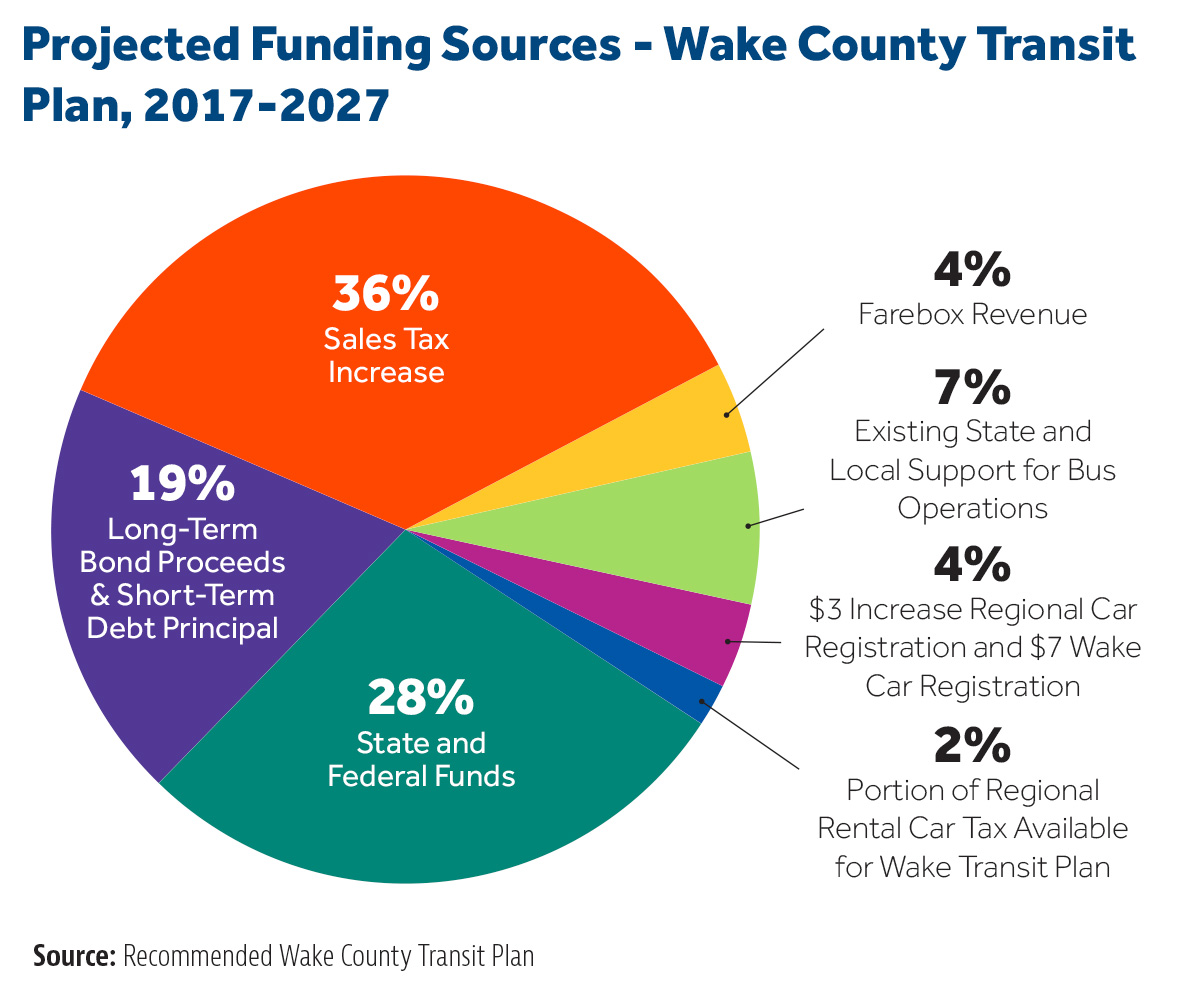
Farebox Revenue
Perhaps the most interesting part of the plan’s revenue projections is the small yellow sliver at the top of the pie chart. That’s farebox revenue, or the money that those using the service will actually pay to ride. Normal businesses don’t really have charts like this because ALL of their revenue comes from customers paying for services. But not so for Wake County Transit. For this plan, only 4 percent actually comes from people paying for the services they’re using.
It’s important to note that the 4 percent is over the next 10 years. There is no expectation that farebox revenue will ever contribute a significant amount to the finances of the transit system. Unlike traditional businesses, for which sales revenue must eventually cover costs, the long-term plan is for the system to be subsidized at a level of 96 percent.
Why
The Recommended Wake County Transit Plan is a substantial document – 36 pages of small type. And it gives a lot of details about what will be built and where, the frequency of service, various options for expansion, etc. It also talks about why the county is seeking to spend all this money on a huge transit package.
Wake County is currently in the bottom range of its peers in terms of service hours provided per capita.6
Plans for some routes, called “coverage services,” are just what they sound like. They’re about making sure every corner of the county is covered, even if use of those routes is minimal.
It is understood that the coverage services will not have high ridership as that is not their purpose. Instead, their purpose is to provide basic access across the County, even in areas of low demand.7
One has to question whether such an approach makes sense. Transit is not a good thing in and of itself. It is also not inherently bad. Rather transit, like all other use of tax- payers’ money, needs to be evaluated based on how well it meets the needs of people and community, how it benefits the taxpayers who are footing the bill. It is difficult to see how a bus route to an area without a lot of people that runs infrequently and only during peak hours (which is what these “coverage services” do) offers something of value to anyone. This includes the few people who do live along the route. If the bus comes only once every hour, then it’s no longer useful for everyday activities like shopping or getting to work.
But it does allow Wake County to produce a map that looks like the map below, which comes from page 9 of the Recommended Wake County Transit Plan.
Notice that all the green lines are hourly service. The orange are hourly, but only during rush hour, which is no good if you work hours other than 9-5. The blue are 30-minute services, which are still infrequent enough that riders really have to plan around the bus, rather than be- ing able to rely on a service that’s there when it’s need- ed. The purple is commuter rail, which has its own set of problems. Which means the only really useful lines on this map are the red ones.
Also notice that these lines all basically run into and out of downtown Raleigh. So what about people who live in Knightdale but work in Wake Forest? A system that re- quires travel from any point of origin, into Raleigh, connection to another bus, and then back out to the destination is unlikely to be useful to those communities.
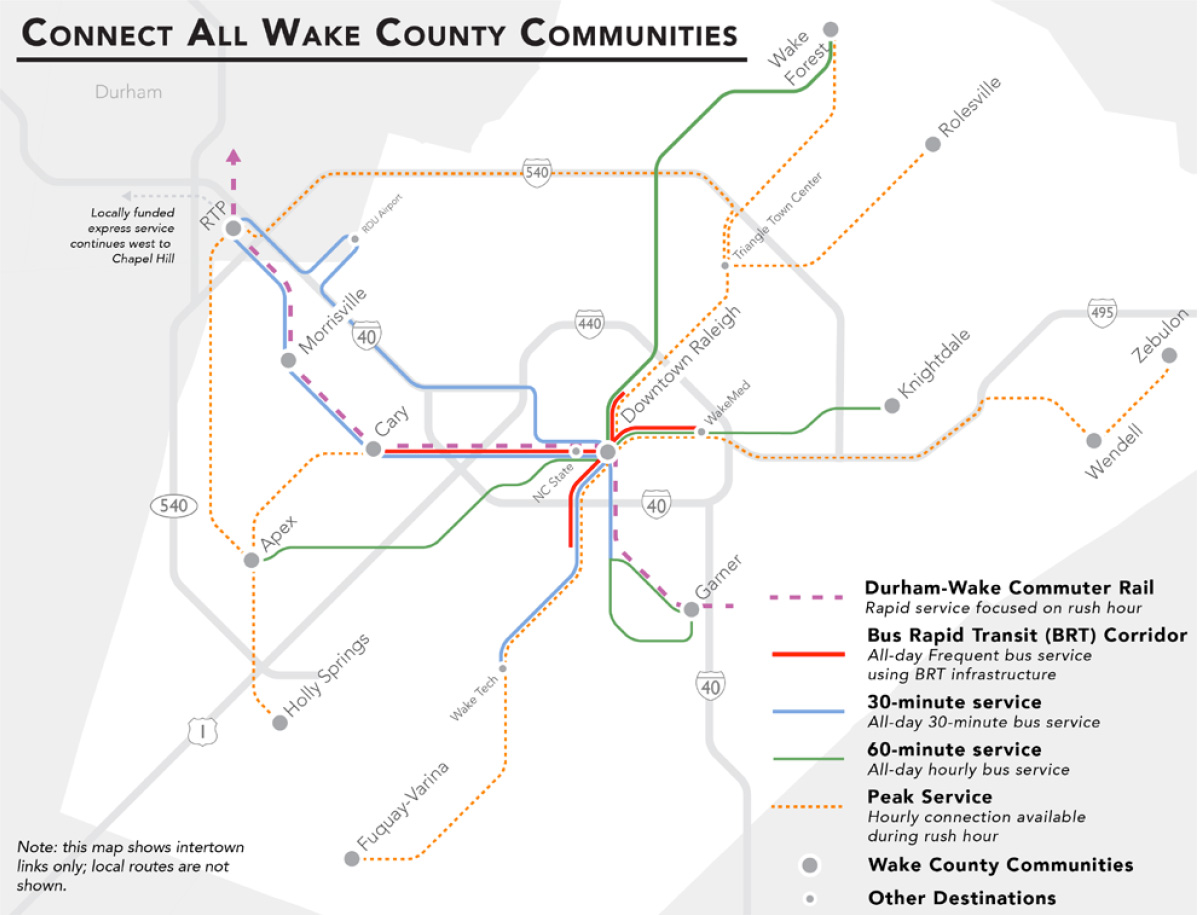
Even the plan itself acknowledges this. It discusses the importance of bus and rail stops that are walkable “…be- cause transit functions well only where people can walk to the stop.”8 And it talks about the importance of frequency because, “It transforms the experience of using transit, from ‘I have to build my life around the schedule’ to ‘tran- sit is there whenever I need it..’”9
Accordingly, it also considers the percentage of people who live within 3⁄4 mile of proposed services and declares that 80 percent of jobs will be within that range. But it ignores the more significant numbers – only 48 percent of jobs are located within 3⁄4 mile of the proposed frequent network (the red line) and, even more significantly, only 20 percent of the population lives within 3⁄4 mile of the proposed frequent network.10 Even if we assume that all of that 20 percent of the population also works close to frequent transit (which obviously will not be the case), that still leaves 80 percent of people who either have to travel significant distance, wait on infrequent buses, or both.
If the goal really is to get people where they need to be when they need to be there, then the Wake County Transit Plan falls far short. Of course, if the goal is to look like a progressive “connected” city with at least token bus service to every municipality, then the Wake Transit Plan will do nicely.
Ridership
There is little evidence that Wake County residents want to use transit. While commuter rail and BRT don’t currently exist in Wake County, there is an extensive bus network. According to the Transit Plan, 66 percent of jobs and 41 percent of people are already within 3⁄4 mile of a bus stop.11 But ridership numbers are extremely low. There is a demonstrated preference for cars. And while that could change, there’s no evidence of movement in that direction. The transit plan uses lots of aspirational language, like this:
As new routes are added, ridership will start off slow but will grow as people change their travel pattern. For example, choosing to ride transit rather than drive or share a ride with others. As frequency and span increases, riders will begin to consider using the expanded system for more of their needs.12
What the plan doesn’t offer is any evidence that this is the case. The authors may hope for these sorts of shifts, but the choices made by Wake County residents thus far don’t seem to support it. Which isn’t surprising when you consider this result from a survey conducted by the Transit Plan’s authors. “…although they largely don’t use transit today, many indicated they likely would use an enhanced system. Over 85% of this same group also indicated that people benefit from enhanced transit, even if they do not use it themselves.”13
And that’s the crux of the issue. Lots of people think transit sounds like a great idea for other people. Buses aren’t as comfortable or convenient as a car, so they don’t want to use it themselves, but they think it’s wonderful for other folks. Until significant numbers of people across Wake County are using the existing transit system, tax- payers should not be asked to foot the bill for an expand- ed system that will be underutilized, inconvenient, and expensive.
Endnotes
[1] Recommended Wake County Transit Plan, p.3. waketransit.com/wp-content/uploads/2015/12/Recommended-Wake-County-Transit-Plan_12-07-15.pdf
[2] Ibid, p.8.
[3] Ibid.
[4] Ibid, p.12.
[5] Ibid, p.36.
[6] Ibid, p.7.
[7] Ibid, p.12.
[8] Ibid, p.15.
[9] Ibid.
[10] Ibid, p.14.
[11] Ibid.
[12] Ibid.
[13] Ibid, p.31.
